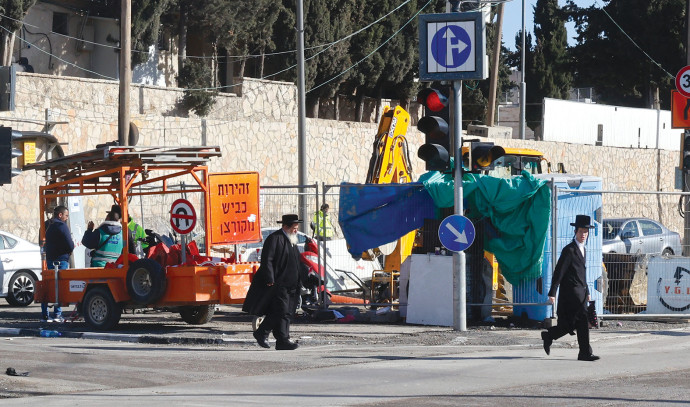In the heart of Jerusalem lies the Bar-Ilan/Shmuel Hanavi interchange, a bustling nexus of transportation and commerce. This vital junction, named after the intersecting Bar-Ilan and Shmuel Hanavi streets, serves as a lifeline for commuters navigating the city’s labyrinthine streets. Its strategic location in the northern part of Jerusalem makes it a crucial connection point, facilitating the seamless flow of traffic between various neighborhoods, suburbs, and adjacent cities.
Over the years, the interchange has undergone significant transformations to meet the ever-growing demands of a bustling metropolis. Initially established during Jerusalem’s expansion beyond its historic walls, the interchange witnessed a surge in importance following the 1967 Six Day War. The emergence of barricade neighborhoods on its eastern side propelled its evolution into a transportation and commercial hub, connecting vital areas like the Mount of Olives and facilitating the city’s growth.
Beyond its functional significance, the interchange holds cultural and historical importance for the residents of Jerusalem. Named after Rabbi Ovadia Yosef, the former Sephardi chief rabbi (although it is still referred to as Bar-Ilan/Shmuel Hanavi), the interchange symbolizes the city’s rich tapestry of heritage and tradition.
Events like Rabbi Yosef’s funeral in 2013, which drew massive crowds and disrupted traffic, underscore the intersection’s cultural significance and its role as a focal point for communal gatherings.
Construction of the Jerusalem light rail
More recently, the interchange has been at the center of ambitious infrastructure projects that are expected to enhance connectivity and accessibility. Chief among them is the construction of the Jerusalem light rail, a modern transit system designed to revolutionize urban transportation in the city. The Bar-Ilan/Shmuel Hanavi interchange serves as a focal point for this, with plans to integrate both the Green Line and the Blue Line of the light rail system.
The Green Line, already operational, has a stop at the interchange, providing commuters with a convenient way to traverse the city. The Blue Line, the next phase of expansion, promises to extend connectivity even further.
Planned as an underground station at the interchange, this new line will seamlessly connect to the overground Green Line station. The integration of both lines at the interchange is poised to revolutionize transportation in Jerusalem, offering commuters unparalleled convenience and accessibility.
Despite the promises of enhanced connectivity, the construction of the Blue Line has not been without its challenges. Extensive infrastructure work, initiated in 2022, has disrupted traffic patterns and posed logistical challenges for residents and businesses in the vicinity.
The phased approach to construction, dividing the works into four quadrants, aims to minimize disruptions while ensuring progress toward the project’s completion. City officials have implemented alternative traffic routes and adjustments to public transport services to mitigate the impact on commuters.
As construction progresses and the vision of an integrated light rail network becomes a reality, the Bar-Ilan/Shmuel Hanavi interchange stands as a testament to Jerusalem’s spirit of innovation and progress. With careful planning and concerted efforts, this vital junction will continue to serve as a gateway to the city, fostering connectivity, as well as a sense of community for generations to come.■




